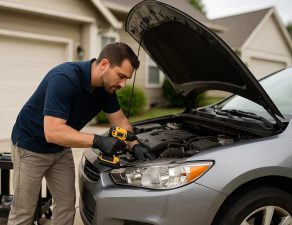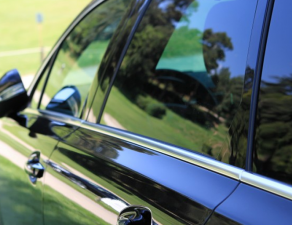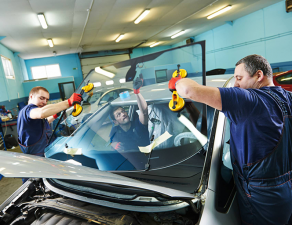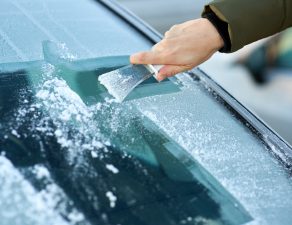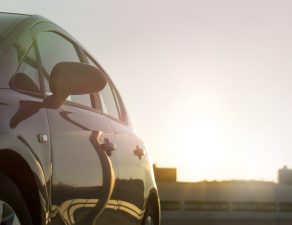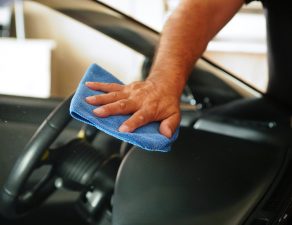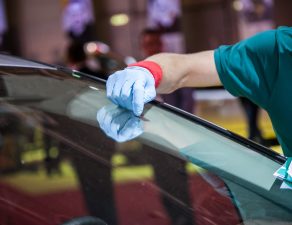
The popularity of early automobiles was stoked into a red-hot frenzy over a period of 20 years. This period was known as “brass era” cars, as manufacturers were playing with the design and power systems of vehicles in a variety of ways. Horseless carriages, as cars during the time were known, could be powered with petrol (gas) engines, steam engines (which were quite popular at the time), and even early electric systems.
Instantly Get Up to 3 Local Windshield Replacement Quotes
As cars rose in popularity, most early drivers would wear goggles to protect their vision. Of course this didn’t prevent other road debris from smacking them or the passengers of the vehicle in the face as they cruised along. With the rise of popularity, along with the increase in vehicle speed, the use of auto glass began.

Early auto glass was a “windscreen” that was designed much like a window you would find in a house. If the glass became too dirty, the driver could lower the horizontally divided window, and continue driving with clear vision. Since most drivers still wore safety glasses, this was rarely an issue.
What did become an issue, was the fact that whenever a stone hit the glass, if the driver went over notably rough roads, or if the car got into even a minor fender bender, the glass would shatter and lacerate the driver and passengers. More injuries were incurred from auto glass breaking in a vehicle, than from the actual auto accidents during that time period.
In 1903, French chemist Edouard Benedictus accidentally discovered shatter-proof glass. After filling a glass beaker with dried collodion film, he accidentally dropped the beaker on the ground. To his surprise, the glass did not shatter, but rather cracked without breaking apart.
This inspired Benedictus to experiment with and further develop this newly discovered “laminate” glass. In 1911 he formed a patent and even went on to form the Societe du Verre Triplex, for the purpose of producing a composite of glass and plastic for use in automobiles.
Around the same time, John Wood of England had patented another type of laminate glass for safe use in automobiles. His version of laminate glass differed because it was produced by sandwiching Canadian balsam between 2 panes of glass.
Despite these radical discoveries in glass safety and strength, laminate glass wasn’t widely used in vehicles until after World War I. Up until that point, normal sheets of glass, and occasionally tempered glass (which goes through a series of heating and cooling treatments to strengthen the glass) had been the de facto auto glass in most vehicles.
There are conflicting stories revolving around the initial implementation of auto glass in the majority of vehicles.
Some accounts say that in 1918 Henry Ford was looking through the rear window of a Model T, and upon seeing that the view was distorted, he decided the vehicle needed improved glass.
Another account reports that after a series of nasty lawsuits in which glass shattered and hurt the driver and passengers of various vehicles, in 1926 Henry Ford decided to implement safety glass in all of his vehicles.
Either way, Henry Ford needed to produce less expensive glass-the production of Triplex glass was not only very time consuming, but was also very costly. As the demand for fully enclosed vehicles rose, the price of glass had continued to rise nearly three-fold.
One of Ford’s employees began to work with a British glass manufacturer, Pilkington, on a new glass manufacturing process. (Today, Pilkington is considered the highest quality auto glass manufacturer in the world, and even produces structural safety glass for large high-rise buildings.)
Ford slowly began rolling out vehicles with the option to upgrade various vehicles with installed safety glass, starting in 1919. By 1926, safety glass was utilized in every Ford vehicle that was available for purchase.
The laminate auto glass that we use today was developed in 1927, by Canadian chemists Howard W. Matheson and Frederick W. Skirrow. The two chemists invented polyvinyl butyral (PVB), which was sandwiched between 2 panes of glass that had undergone tempering treatments.
Ultimately, in 1936, the majority of United States car manufacturing companies began using the PVB laminate auto glass because it had been discovered that unlike laminate glass that was made with collodion film or Canadian balsam, PVB auto glass did not discolor over time. It also was much harder to penetrate in the event of an accident. A mere five years later, PVB safety auto glass had all but replaced the earlier versions of safety glass altogether.
